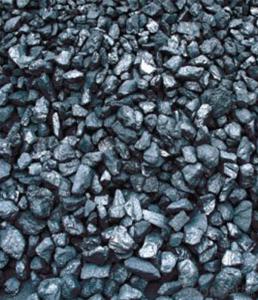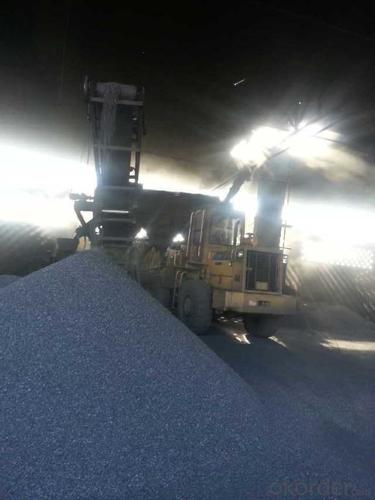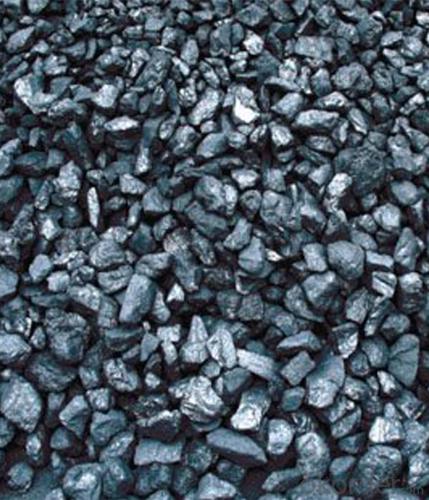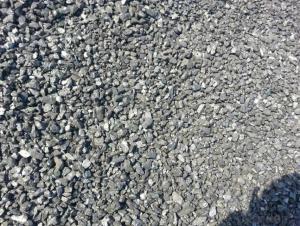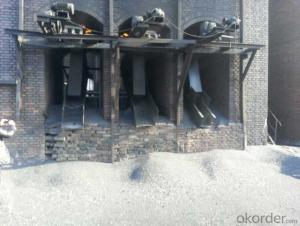FC 92% Carbon additive
- Loading Port:
- China Main Port
- Payment Terms:
- TT OR LC
- Min Order Qty:
- -
- Supply Capability:
- -
OKorder Service Pledge
OKorder Financial Service
You Might Also Like
Package:
in MT bags
in 25KG bags
or as buyer's request
Specifications
Calcined Anthracite
Fixed carbon: 90%-95%
S: 0.5% max
Size: 0-3. 3-5.3-15 or as request
Calcined Anthracite is produced using the best Anthracite-Taixi Anthracite with low S and P, It is widely used in steel making and casting, Chemical and some other fields.
General Specification of Calcined Anthracite:
PARAMETER UNIT GUARANTEE VALUE | |||||
F.C.% | 95MIN | 94MIN | 93MIN | 92MIN | 90MIN |
ASH % | 4MAX | 5MAX | 6MAX | 7MAX | 8MAX |
V.M.% | 1 MAX | 1MAX | 1.5MAX | 1.5MAX | 1.5MAX |
SULFUR % | 0.5MAX | 0.5MAX | 0.5MAX | 0.5MAX | 0.5MAX |
MOISTURE % | 0.5MAX | 0.5MAX | 0.5MAX | 0.5MAX | 0.5MAX |
Size can be adjusted based on buyer's request.
Pictures of Calcined Anthracite:

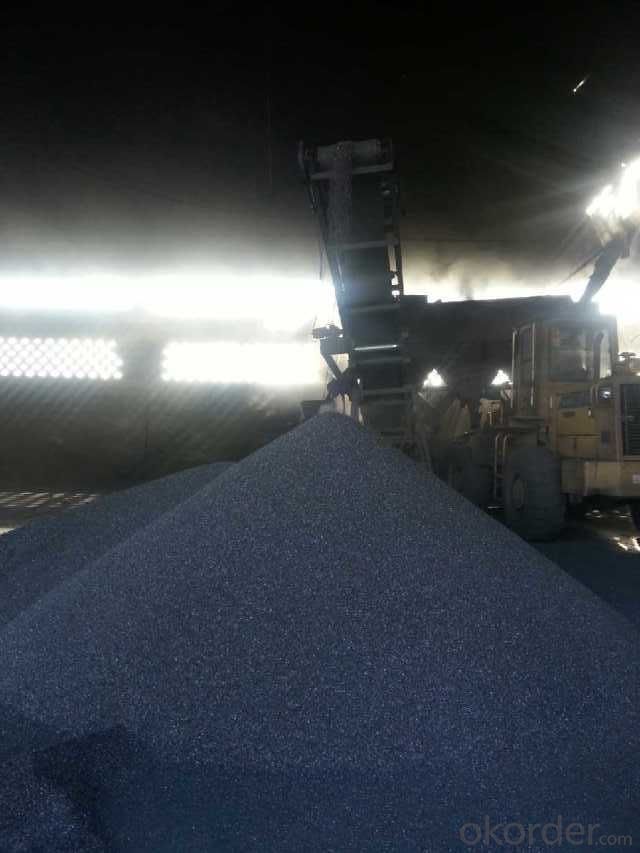
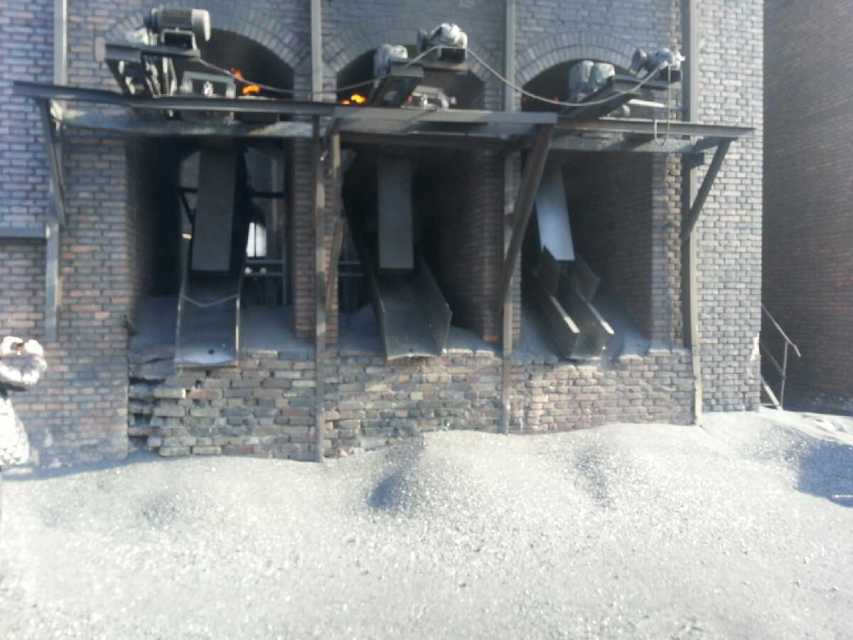

- Q: What are the impacts of carbon emissions on urban environments?
- Urban environments are significantly affected by carbon emissions, with air pollution being one of the most notable consequences. The release of carbon dioxide and other greenhouse gases from vehicles, factories, and power plants contributes to the formation of smog and harmful particulate matter in cities. This pollution poses serious health risks to residents, especially those with respiratory conditions, and can result in increased hospital admissions and premature deaths. In addition, carbon emissions contribute to climate change, which has wide-ranging implications for urban areas. Rising temperatures and changing weather patterns can intensify heatwaves, leading to an increase in heat-related illnesses and fatalities. The frequency and severity of extreme weather events, such as hurricanes and floods, can cause significant damage to infrastructure and disrupt essential services like water supply and transportation. Furthermore, coastal cities face the threat of rising sea levels as a result of carbon emissions. The melting of polar ice caps and the expansion of seawater contribute to flooding and erosion, particularly in these areas. This can lead to the loss of valuable land, displacement of populations, and damage to critical infrastructure such as buildings, roads, and sewage systems. Additionally, carbon emissions contribute to the urban heat island effect, whereby cities experience higher temperatures compared to surrounding rural areas. This is due to the absorption and retention of heat by urban materials like concrete and asphalt. The urban heat island effect can worsen the health risks associated with heatwaves and increase the demand for cooling, thus furthering carbon emissions. Lastly, carbon emissions have economic ramifications for urban environments. The costs of mitigating and adapting to climate change effects, such as implementing climate-resilient infrastructure and disaster response measures, can be substantial. Additionally, air pollution and extreme weather events can result in increased healthcare expenses and productivity losses. To address these impacts, it is crucial to reduce carbon emissions by transitioning to cleaner energy sources, promoting sustainable transportation options, and implementing energy-efficient practices in buildings. Urban planning and design should also prioritize the creation of green spaces, tree planting, and the use of reflective and permeable materials to combat the urban heat island effect. By tackling carbon emissions in urban environments, we can create healthier and more resilient cities for present and future generations.
- Q: What are carbon isotopes and how are they used in scientific research?
- Carbon isotopes are different forms of carbon that vary in the number of neutrons in their nucleus. The most common carbon isotope is carbon-12, which has 6 protons and 6 neutrons. However, there are also carbon-13 and carbon-14 isotopes, which have 7 and 8 neutrons respectively. In the realm of scientific research, carbon isotopes are utilized for their distinctive characteristics in a variety of ways. One significant application is their use in radiocarbon dating. Carbon-14, a radioactive isotope, undergoes decay over time, allowing scientists to determine the age of organic materials up to 50,000 years old. By measuring the ratio of carbon-14 to carbon-12 in a sample, scientists can estimate the time since the organism's death. Moreover, carbon isotopes are employed in the study of carbon cycling in ecosystems. Since plants preferentially absorb carbon-12 over carbon-13, the isotopic composition of carbon in plants can provide information about their growth and carbon source. By analyzing isotopic signatures in plant tissues, scientists can gain insights into ecological processes like photosynthesis, respiration, and carbon dioxide exchange between different parts of the ecosystem. Carbon isotopes also play a role in examining animal diets. The carbon isotopic composition in an animal's tissues reflects the carbon sources it consumes. By analyzing the carbon-13 to carbon-12 ratio, scientists can determine whether an animal primarily consumes plants or other animals, offering insights into food webs, trophic levels, and ecological interactions. Furthermore, carbon isotopes are valuable in fields like paleoclimatology, where the carbon-13 to carbon-12 ratio in ancient ice cores or ocean sediments can provide information about past climate conditions. Isotopic analysis of carbon compounds is also used in forensic science, geochemistry, and environmental monitoring to trace the origin and fate of pollutants and contaminants. In conclusion, carbon isotopes are different forms of carbon atoms with varying numbers of neutrons. They are extensively utilized in scientific research for radiocarbon dating, studying carbon cycling in ecosystems, determining animal diets, understanding past climate conditions, and other fields. Their unique properties make them indispensable tools for comprehending the natural world and our place within it.
- Q: What is the chemical symbol for carbon?
- The chemical symbol for carbon is C.
- Q: What are the impacts of carbon emissions on the stability of river ecosystems?
- Carbon emissions have significant impacts on the stability of river ecosystems. One of the primary consequences of carbon emissions is the increase in greenhouse gases in the atmosphere, leading to global warming. Rising temperatures have direct and indirect effects on river ecosystems. Firstly, increased temperatures can alter the physical characteristics of rivers and affect the availability of oxygen in the water. Warmer water holds less dissolved oxygen, which can harm aquatic organisms such as fish and invertebrates that rely on oxygen for survival. This decrease in oxygen levels can lead to reduced biodiversity and even fish kills. Secondly, climate change, driven by carbon emissions, can disrupt the natural hydrological cycle. Changes in precipitation patterns can result in droughts or floods, causing fluctuations in river flow. These changes can affect the spawning and migration patterns of many aquatic species, disrupting their life cycles and reducing their populations. Furthermore, altered river flows can also impact the stability of riverbank and riparian habitats, leading to erosion and habitat loss. Additionally, increased carbon emissions contribute to ocean acidification. When carbon dioxide is absorbed by water, it forms carbonic acid, which lowers the pH of the water. Acidic waters can have detrimental effects on aquatic life, including shellfish, corals, and other calcifying organisms. River ecosystems are interconnected with coastal and marine ecosystems, so the impacts of ocean acidification can indirectly affect river ecosystems through the food web. Moreover, carbon emissions contribute to the deposition of air pollutants, such as nitrogen and sulfur compounds, onto land and water bodies. These pollutants can be transported by rainfall into rivers, leading to increased nutrient levels and eutrophication. Excessive nutrients can cause harmful algal blooms, deplete oxygen levels, and create dead zones, further disrupting the balance of river ecosystems. In conclusion, carbon emissions have profound impacts on the stability of river ecosystems. Rising temperatures, altered hydrological cycles, ocean acidification, and increased nutrient levels all contribute to the degradation of these ecosystems. It is crucial to reduce carbon emissions and implement sustainable practices to mitigate these impacts and preserve the health and stability of river ecosystems.
- Q: What are carbon-based superconductors?
- Superconductivity, a phenomenon where electrical resistance drops to zero at low temperatures, is exhibited by carbon-based superconductors. Unlike conventional superconductors, which are typically metallic elements or alloys, carbon-based superconductors are primarily composed of carbon atoms. These materials possess a unique structure and properties that make them efficient conductors of electricity when cooled below a critical temperature. Carbon-based superconductors can be divided into two main types: organic superconductors and fullerene superconductors. Organic superconductors consist of carbon-based molecules, such as organic salts or polymers, that form a crystal lattice structure. Extensive research has been conducted on these materials, revealing promising superconducting properties at low temperatures. On the other hand, fullerene superconductors are composed of carbon molecules arranged in a cage-like structure called fullerenes. The most famous fullerene is C60, also known as a buckyball, which has 60 carbon atoms arranged in a soccer ball-like shape. By doping these fullerene cages with specific elements like alkali metals or transition metals, their superconducting properties can be enhanced. What makes carbon-based superconductors particularly fascinating is their potential for high-temperature superconductivity. While most conventional superconductors require extremely low temperatures close to absolute zero (-273.15°C or -459.67°F) to exhibit superconductivity, certain carbon-based superconductors have been found to retain their superconducting properties at relatively higher temperatures. This characteristic is significant for practical applications as it facilitates easier cooling and opens up possibilities for widespread use of superconductivity in fields like energy transmission, magnetic levitation, and quantum computing. However, it is crucial to note that carbon-based superconductors are still an active research area, and numerous challenges remain in understanding their mechanisms and enhancing their superconducting properties. Nevertheless, the discovery and exploration of these materials hold great promise for advancing the field of superconductivity and enabling new technological breakthroughs.
- Q: How does carbon impact the pH balance of oceans?
- Carbon dioxide (CO2) dissolved in seawater reacts with water molecules to form carbonic acid, which lowers the ocean's pH. This decrease in pH, known as ocean acidification, has detrimental effects on marine life, especially organisms that rely on calcium carbonate to build their shells or skeletons. It disrupts the delicate balance of the marine ecosystem, affecting the growth, reproduction, and survival of various species, ultimately posing a threat to the biodiversity and health of our oceans.
- Q: Does anyone know what the definition of carbon storage is in ecology? Thank you
- It's not 12g's problem, it's carbon selection.If oxygen is selected, it is not 12g, but it must be 16g.So why choose carbon atoms instead of other atoms?(Note: this carbon atom must have 6 protons and 6 neutrons. The following is called C-12. Of course, there are 6 protons and 7 neutrons, or 8 neutrons carbon atoms, but can not be usedI refer to other information stored on the computer, but I can't remember the source.The reason why C-12 is used as the relative atomic mass standards are as follows: (1) the formation of many high quality carbon molecular ion and hydride, for mass spectrometry; (2) 12C is easily measured in a mass spectrometer, using mass spectrometer to determine the relative atomic mass is the most accurate method of modern (3); after using C-12, the relative atomic mass of all elements have little change, only 0.0043% less than in the past; (4) the carbon atom is stable in natural abundance; (5) the carbon in nature is widely distributed and its compounds especially organic compounds is various; (6) the minimum density of hydrogen is relative atomic mass not less than 1.The absolute mass of an atom is very small, and if expressed in kilograms, it is very inconvenient. Thus, 1/12, the quality of such a carbon atom, is used as a standard, and the mass of other atoms is the relative atomic mass of this atom
- Q: How is carbon used in the production of fertilizers?
- Fertilizer production relies on carbon as a vital ingredient. Various forms of carbon, such as organic matter, carbon dioxide, and carbonates, are used for this purpose. These carbon sources have multiple benefits, including enhancing soil fertility, promoting plant growth, and increasing crop yield. Organic matter, such as compost, manure, and crop residues, contains decomposed plant and animal materials, providing carbon to the soil. When incorporated into the soil, these organic sources supply plants with essential nutrients like nitrogen, phosphorus, and potassium. They also improve soil structure, water retention, and microbial activity, all of which are crucial for optimal plant growth. Carbon dioxide (CO2) is another valuable source of carbon utilized in fertilizer production. This greenhouse gas is captured from industrial emissions and utilized in the production process. CO2 is transformed into different chemical compounds like urea and ammonium bicarbonate, which serve as nitrogen fertilizers. These fertilizers gradually release nitrogen, ensuring a continuous supply of nutrients to plants over an extended period. Furthermore, carbonates, particularly calcium carbonate, are employed as neutralizing agents in fertilizers. They aid in balancing the pH levels of acidic soils, making them more suitable for plant growth. Additionally, carbonates provide a source of calcium, an essential nutrient that further enhances plant growth and development. To summarize, carbon plays a critical role in fertilizer production by providing essential nutrients, improving soil fertility, and enhancing plant growth. Whether in the form of organic matter, carbon dioxide, or carbonates, carbon is an indispensable component that contributes to the success of modern agriculture.
- Q: How does carbon impact the availability of clean air?
- Carbon impacts the availability of clean air through its contribution to air pollution and climate change. When carbon-based fuels such as coal, oil, and natural gas are burned for energy production, they release carbon dioxide (CO2) into the atmosphere. CO2 is a greenhouse gas that traps heat in the Earth's atmosphere, causing the planet to warm up, leading to climate change. Climate change, in turn, affects air quality in several ways. Rising temperatures can increase the frequency and intensity of wildfires, which release large amounts of carbon dioxide and other pollutants into the air. Additionally, higher temperatures can exacerbate the formation of ground-level ozone, a harmful air pollutant that can trigger respiratory issues and other health problems. Furthermore, carbon emissions contribute to the formation of particulate matter, such as soot and fine particles, which can be harmful when inhaled. These particles can come from the burning of fossil fuels in vehicles, power plants, and industrial processes. Particulate matter can cause respiratory and cardiovascular problems and is especially harmful to vulnerable populations like children, the elderly, and those with pre-existing respiratory conditions. Reducing carbon emissions is crucial to improving air quality and ensuring the availability of clean air. Transitioning to renewable energy sources, improving energy efficiency, and implementing policies to reduce carbon emissions can all help mitigate the impact of carbon on air quality. Additionally, promoting sustainable transportation, reducing deforestation, and adopting cleaner industrial practices can contribute to cleaner air by reducing carbon emissions and other pollutants.
- Q: Today in the market to buy Yuba, instructions have such a word that I don't understand, please master Zhijiao: carbon fiber after energized carbon molecule formation of Brown movement, this movement can be effective in most of the electrical energy into the far infrared.
- When it is energized, its motion intensifies, the frequency becomes V2, and the frequency becomes larger, the vibration system is unstable and the frequency is back to its original frequency. So you have to release energy in the form of electromagnetic waves. I am not too clear about the specific release process. I know that the molecules do slow motion and generate additional electromagnetic waves. The frequency of the extra electromagnetic wave emitted is v2-v1, and its frequency falls in the far infrared region.
Send your message to us
FC 92% Carbon additive
- Loading Port:
- China Main Port
- Payment Terms:
- TT OR LC
- Min Order Qty:
- -
- Supply Capability:
- -
OKorder Service Pledge
OKorder Financial Service
Similar products
Hot products
Hot Searches

